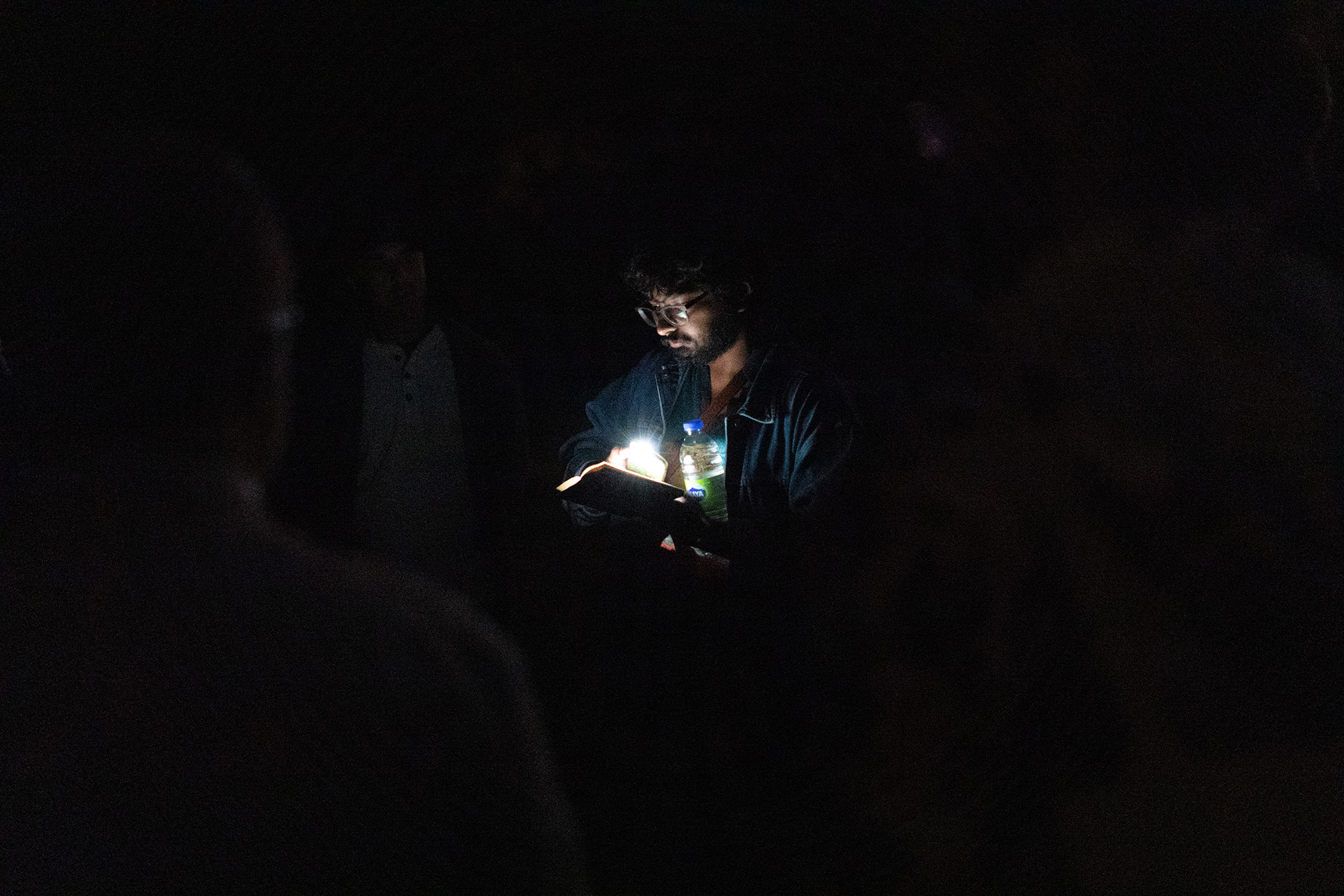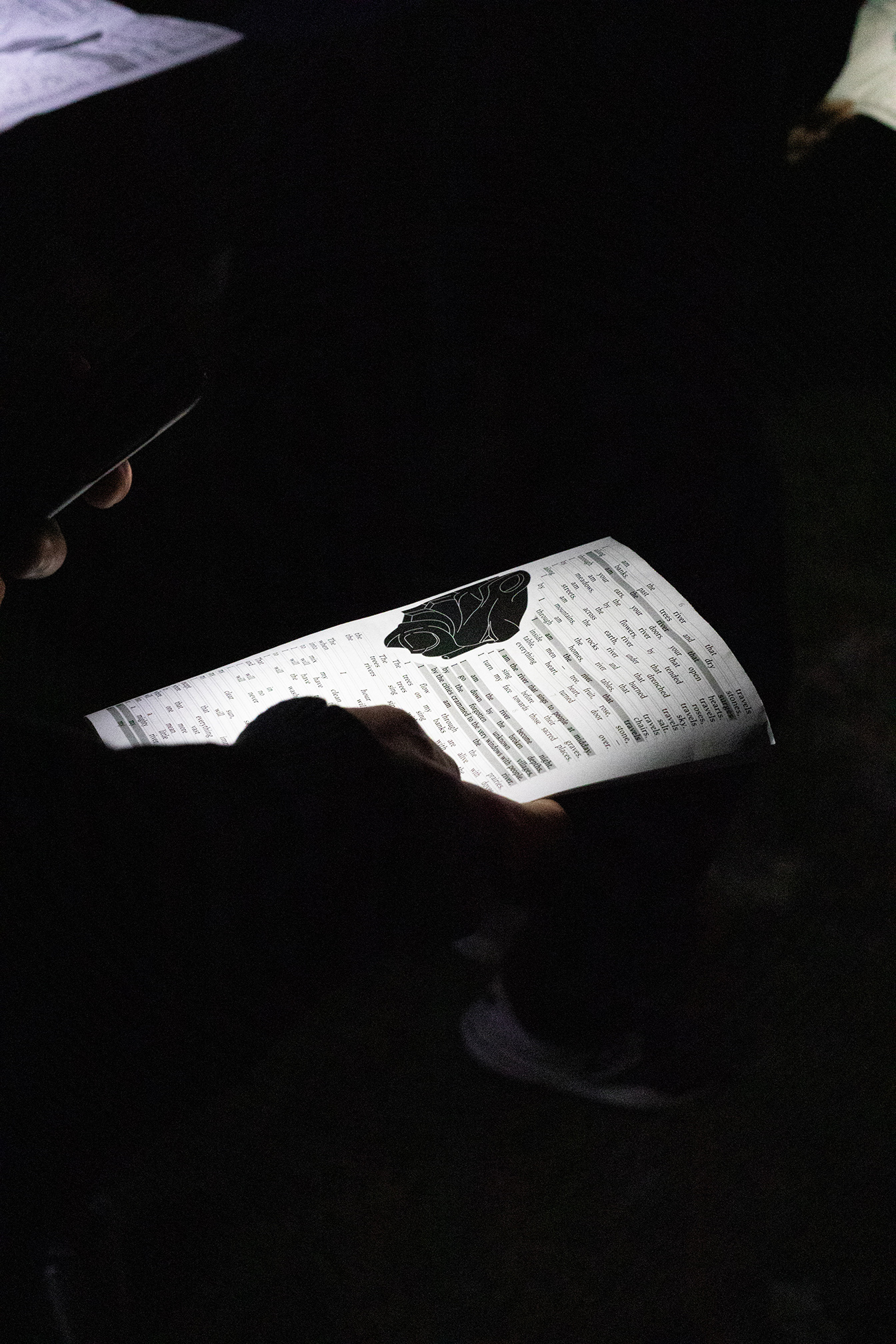How to See in the Dark
PUBLIC ART COMMISSION
This night-time “curatorial tour” of Toronto’s Don Valley Ravine proposed seeing the river and the ravine as artworks, making it possible to see and analyse the hidden flows of material and meaning into and out of the city.










EXCERPT ︎
In the old days before measurement, deer roamed the valley, lowered their necks to speak to the waters, waters that still remember them, that nourish plants that resemble them. The City, meanwhile, has allegiances to faraway places, fantasies from across the ocean — plants from other climes, that remember things these waters have never known.
Subsumed into the city, the river is now one among many riverine flows into and out of the city — goods, oil, traffic, people, information, and money. And thus is made available to contradictory movements that counterbalance and combine outside the realm of vision. The City becomes a dominant theme in politics, although it is no longer a field of recognizable operations. Beneath the idea that is The City, powers that have no readable identity multiply; without clear silhouettes, without rational sightlines, they are impossible to administer.
[...] Equality and freedom have to be imposed by the revolt of the excluded, yes, but also reconstructed by citizens in a process that has no end. Meanings do not pre-exist in stories or things but are created in the everyday situations in which they are told or seen. You think of oral traditions as social activities rather than as concrete products. You start to see stories as parts of the tools of living rather than as a set of meanings embedded within things and waiting to be discovered. The city you think you live in seems to reflect above all, what it values — which is value itself. But this is only a story. To remake the city, you need only retell the stories.
Project by Ameen Ahmed
/ 2022 / Pumice Raft ︎
/ tagged art, curation, writing